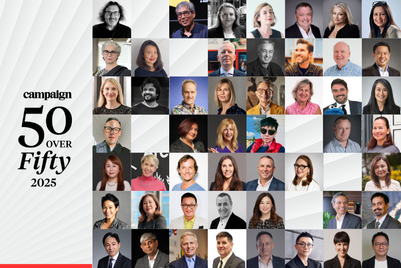
Marketers will spend more on display ads in Asia Pacific over the next five years than in either Europe or America, according to a new report by Forrester analysing data from Australia, China, India, Japan and South Korea.
The report predicts that display spending in Asia Pacific will grow from $20.7 billion in 2016 to $38.1 billion by 2021, putting the region roughly in line with growth in the US and Europe. There are three main reasons that APAC spend growth may not be as fast as expected from a developing region, the report notes:
- Display already makes up a large percentage of overall digital advertising in APAC—larger than in the US and Europe—which puts restraints on the amount it can grow.
- China, which holds a 67.7 percent slice of the overall display pie, is becoming relatively mature as an online market, so is likely to see only moderate growth.
- India, which will see the highest display ad spending growth rate, only represented 2.5 percent of the APAC display spending market in 2016. Facebook’s prominence in India also means it has the highest amount of social spending relative to display spending, posing further limitations on the latter.
China display deep-dive
Online population and online media time per user in China will slow down to match that of other developed countries, a natural next step following a period of strong growth, says the report. Deric Wong, CEO of OMD Hong Kong, says this chimes with what he is seeing. “China is becoming quite saturated in terms of smartphone penetration, so people who actually wanted to adopt a smartphone will have done so by now and people who aren’t will probably take more time to convert.
“If you look at the time spent [by Chinese people on the internet] it is probably about 50 percent of their time and mobile overtakes that of the PC in China. I think if we wanted to grow the online consumption time we will have to create time for the Chinese consumer.”
This seemingly impossible task might become more feasible with new inventions, he continues. “Just take the driverless car for example, if that becomes available, that will give people more time to spend on the internet while they are commuting to work.”
Until new portions of time can be carved into consumers’ days, marketers should take comfort from the online time deceleration as a sign of the maturation of the market. This means ad prices will increase as sellers learn how to target consumers better, with new technologies such as data management platforms and interactive attribution, says Forrester’s report.
“I think a lot of agency marketers are also looking at how can we better target people on sites using technology so we can reduce the wastage and by doing that… the more targeted we are, the more pricey the advertising space will be as well,” says Wong.
The report also highlighted that four internet companies will account for a huge 55 percent of China’s display spend between 2016 and 2021: Alibaba (22 percent), Tencent (14 percent), Baidu (12 percent) and Youko Tudou (7 percent).
Mobile to drive display spending...
Mobile display spending will be the major power behind Asia Pacific’s display growth, says Forrester, leaping from $9.1 billion to $28.8 billion in the next five years. This is partly down to mobile online populations growing faster than overall online populations and increasing mobile online time per user.
A key opportunity lies in the finding that, across Asia, mobile’s share of display spending lags behind mobile time spent share. “Consumers always lead the change,” explains Xiaofeng Wang, a senior analyst at Forrester. “The consumer habits are changing faster than marketers are changing their strategy. So maybe five years ago, Chinese consumers didn’t spend a lot of their time on mobile but marketers only spent less than 2 percent of their marketing budget on mobile. So marketer’s behaviour is always lagging behind.” This gap is set to close, however, as mobile monetization improves with more targeted ads and better measurability.
Mobile display ads' share should also start to look similar to the mobile ecommerce share, says the report: “With ecommerce, the price of a pair of shoes from a particular eRetailer is the same whether you buy that product on mobile or PC. However, the price of an ad on mobile is less than an ad on PC. Nevertheless, as mobile CPMs improve, we expect mobile display share to begin to look more similar to the mobile ecommerce share.” Forrester cites Yahoo in Japan, where mobile display share exceeded ecommerce share for the first time in 2016, as an example of this.
...But mobile won’t be the ultimate solution
A couple of key mitigating factors may limit mobile’s potential for display ad spend. The first concerns ad blockers, already used by 28 percent of the mobile population in India and 18 percent in China in 2016 according to PageFair's "2016 Mobile Adblocking Report". “I would say this is the trend, consumers getting more and more savvy in protecting their own information,” says Wang. On the other hand, she continues, mobile means marketers can collect more contextual data from consumers given that ad blockers are still not available for in-app advertising.
“Say I’m a WeChat user, I don’t share my location data with WeChat but I’m using BD taxis and I use a navigation app that uses my location data and shares it with WeChat. So advertisers on WeChat can have a better capability. The problem is that consumers need to know what’s happening with their personal information and what kind of value marketers can provide them—it’s a value exchange.
Consumers in Asia Pacific are maybe not that protective about data compared to consumers in the US or Europe, but it’s a growing trend as they are growing more mature. Marketers need to think ‘what’s next’ because if they want to collect consumer information, they must expect to give back a better service.”
Wong agrees: “As long as publishers continue to invest in valid user experience, better quality content, then they should be able to continue to accept their users.”
The second factor set to affect mobile’s dominance is consumers’ preference for watching videos on laptops. Therefore while PC spending will decline from $11.6 billion to $9.4 billion by 2021, laptop users are more likely to watch free ad-supported videos, meaning laptops might receive a greater chunk of spending than suggested. This is particularly relevant in Australia, where the ratio of users who stream video on laptop compared to mobile is 59 percent to 10 percent; and Japan, where it is 50 percent to 7 percent.

Outlook varies by country
Forrester’s report found distinct differences between the outlooks for the five different countries analysed.
- China will continue to lead in display ad spending but will also overtake Japan and South Korea to become the country with the highest mobile share as a percentage of overall display spend by 2012.
- India will see the fastest mobile display growth rate, as it continues to improve cellular broadband coverage and affordability.
- Japan has one of the most mature mobile markets, given that it launched 3G as far back as 2001—therefore growth in mobile display spending will be the slowest of the five countries.
- South Korea’s mobile display spending growth will overtake that of Japan, thanks to greater video consumption. Over three times as many South Korean online users stream video from a TV channel on their phone compared to Japanese users.
- Australia has a similar mobile share to that of the US—relatively low. Facebook, which excels at monetizing mobile ads, has a very strong presence in Australia, leaving a relatively low share of the moneypot for mobile display.



.jpg&h=334&w=500&q=100&v=20250320&c=1)
.jpg&h=334&w=500&q=100&v=20250320&c=1)
.jpg&h=334&w=500&q=100&v=20250320&c=1)




.png&h=334&w=500&q=100&v=20250320&c=1)

.png&h=334&w=500&q=100&v=20250320&c=1)






.png&h=268&w=401&q=100&v=20250320&c=1)
